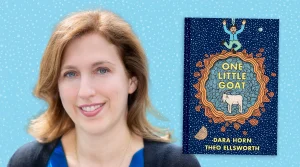Purim is behind us and Passover is just around the corner. Pretty soon you’ll be reaching for your favourite dog-eared, wine-spilled haggadah. You may comfort with its familiar layout and illustrations. Of course, the attraction of a haggadah goes beyond its text and commentary. Today, we’ll tour some of the most beautiful haggadot you can find anywhere.
The National Library of Israel has put together a stunning online collection of haggadot drawing for its actual collection of 10,000 volumes, the largest in the world. It includes the earliest printed Haggadah from 1480 from Guadalajara, 12 years prior to the exile of the Jews from Spain. Printed in square, unpunctuated letters, it is quite austere but highly legible for a haggadah that’s well over 500 years old.
If you want stunning, then the National Library of Israel collection won’t disappoint. The Rothschild Haggadah (known for the family that owned until outbreak of the Second World War) dates to northern Italy from around 1450. It boasts beautiful calligraphy and vibrant illustrations that would be welcome in any contemporary haggadah.
The 13th century “Birds Head Haggadah”
Perhaps the most famous and the oldest illustrated haggadah (c. 1300) is the “Birds Head Haggadah” in which most of the human figures have been replace with birds’ heads probably to comply with the biblical prohibition of depicting graven images. One of the images in the haggadah seems pretty ordinary, birds’ heads aside. It depicts the baking of matzot in preparation for the holiday. But according to Prof. Marc Epstein, that innocent scene could have had a great deal of meaning 700 years ago when Jews were being accused of the ritual murder of children using their blood for magic. As explained at Medievalists.net, “By depicting the very mundane and regular practices involved in making Matzah bread, the illustrator of the Birds Head Haggadah was, in Epstein’s view, trying to explain that this baking process was not evil or threatening as Christians believed.”
Even if you don’t have a trip planned to London’s British Library, you can still thumb through one of the jewels of its collection – the Golden Haggadah. Made around 1320 by a wealthy Jewish family in or near Barcelona, the haggadah contains 56 miniature paintings illustrating stories from Genesis and Exodus. Rather than just looking at shots of the haggadah, the British Library has designed a special webpage in which you can “flip” the pages yourself, magnify sections of particular interest, read explanatory text or turn on an audio commentary.
Karen Roeckard has studied the evolution of the haggadah. In the 16th century, she notes, there were approximately 25 printed haggadot compared to over 3,000 versions today. For centuries, the text of the haggadah was more or less static but the editions were distinguished by illustrations and later by rabbinical commentaries. Real change occurred at the dawn of the 20th century when content began to be changed. One 1904 haggadah hoped these changes would stop “…the derision among the younger generation…” and inspire the participants to “read with interest and reverence.” Roeckard continues her journey through introduction in the 1970s of political haggadot (environmental, vegetarian, egalitarian, etc.), “self liberation” haggadot more recently and finally, tailor-made haggadot.
With the creation of the State of Israel, there was no time for fancy illustrations or flowery commentaries. A simple drawing of a muscular man clutching a rifle graces the cover of the 1948 haggadah from the 3rd Battalion of the Palmach. Passover of that year was spent fighting a difficult battle over the stronghold at Neve-Yoshea which they conquered shortly after the holiday. The Haggadah resonates with “fragile state of the settlement on the eve of the establishment of the State, at one of the breaking points of the War of Independence.”
Freedom Seder, 1969
In 1969, Arthur Waskow, a political activist and rabbi associated with the Jewish Renewal movement published his “Freedom Seder.” It wove the well-known story of the liberation of the Israelites to the struggle for liberation by the Civil Rights movement and the women’s movement. Waskow’s seder is a mixture of traditional (Dayenu) along with “rabbis” including Buber, Thoreau and Arendt discussing “the Promise and the Work, the Vision and the Creation; freedom, justice, sustenance.” As Waskow recalls, “Our efforts became sharper and more urgent in 1968, when the Passover came one bare week after the murder of Martin Luther King, the April uprising of black Washington against the blank-eyed pyramid-builders of our own time, and the military occupation of our city. Who in those days could forget that the prophet King had remembered Moses?” The entire Freedom Seder is available for download.
If you were illustrating a haggadah, how would you depict the “ben rasha” the bad son?” Rabbi Berel Wein says that how you draw him says a lot about Jewish attitudes to the world. In early times, the bad son was “portrayed as a Greek thespian or as a Roman gladiator. In medieval times, he was either the rough, coarse, unlettered peasant or the equally brutal and cruel wandering knight. In later haggadot, the “bad son” was portrayed as being foppish and a dilettante in appearance. In early 20th century American haggadot, he appears as a member of an organized crime gang, cigarette dangling from his lips and a large hat pushed back on his head. … One can learn a great deal about Jewish life, past and present, not only by reading and studying the haggadah but also by just looking at the pictures.”
Next time, contemporary Haggadot including a tongue-in-cheek version care of America’s First Daughter and Son-in-Law.






